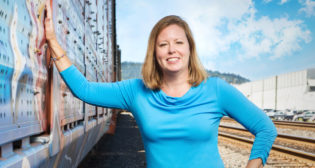
50 Years of BART: Prototypes That Started It All
Written by Bay Area Rapid Transit Communications Department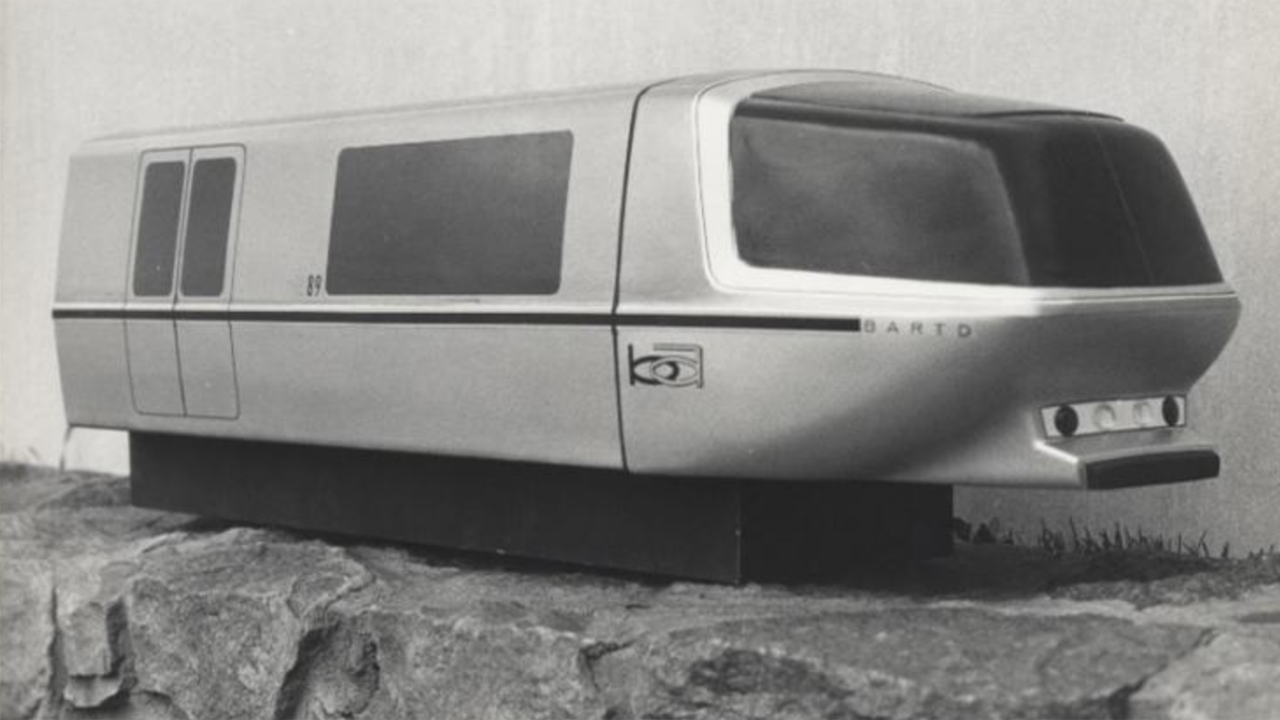
An image of a 1/12 scale model of a BART railcar prototype from the 1960s. (Sundberg-Ferar Image, Courtesy of BART)
The iconic original BART (San Francisco Bay Area Rapid Transit District) car could have looked very different.
Industrial design firm Sundberg-Ferar, which created the concept and design of the original car, recently unearthed a trove of photographs from the 1960s that show BART in its earliest stages. Among the images, selections of which we’ve included in this story, are numerous snapshots of early BART prototypes.
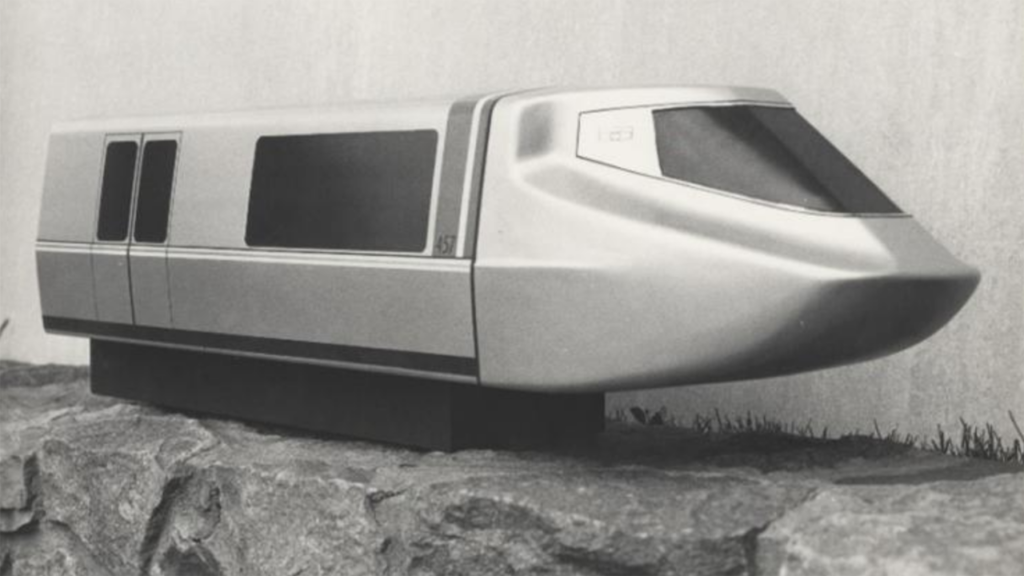
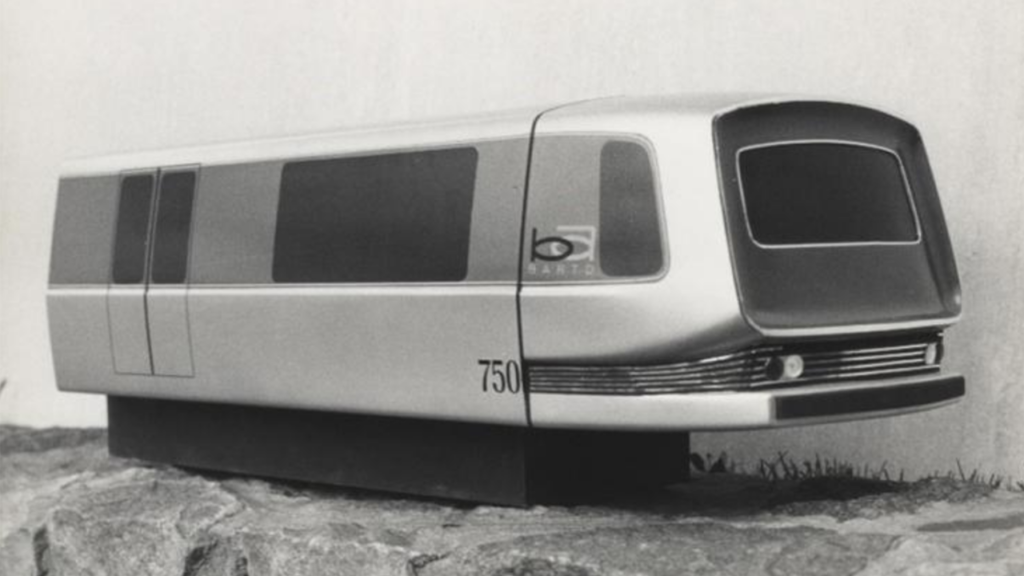
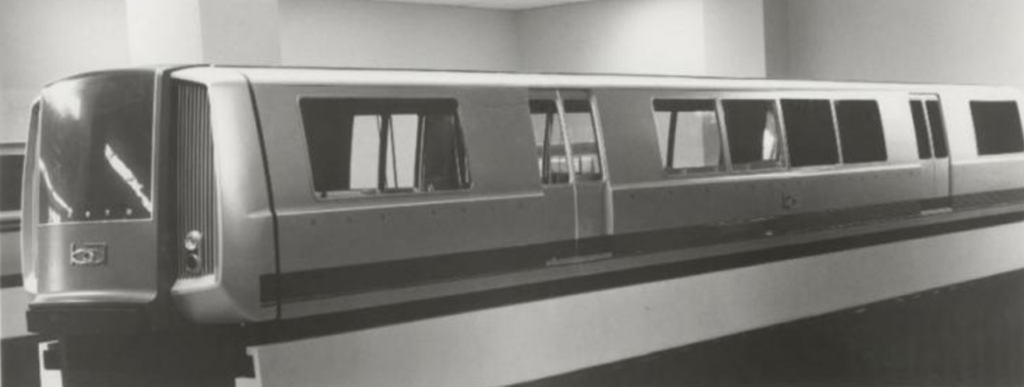
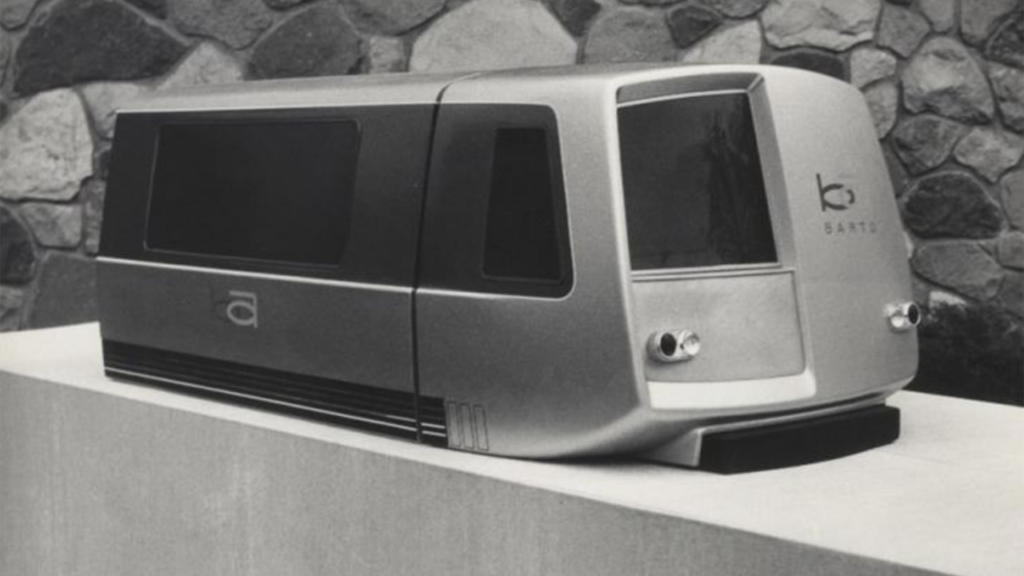
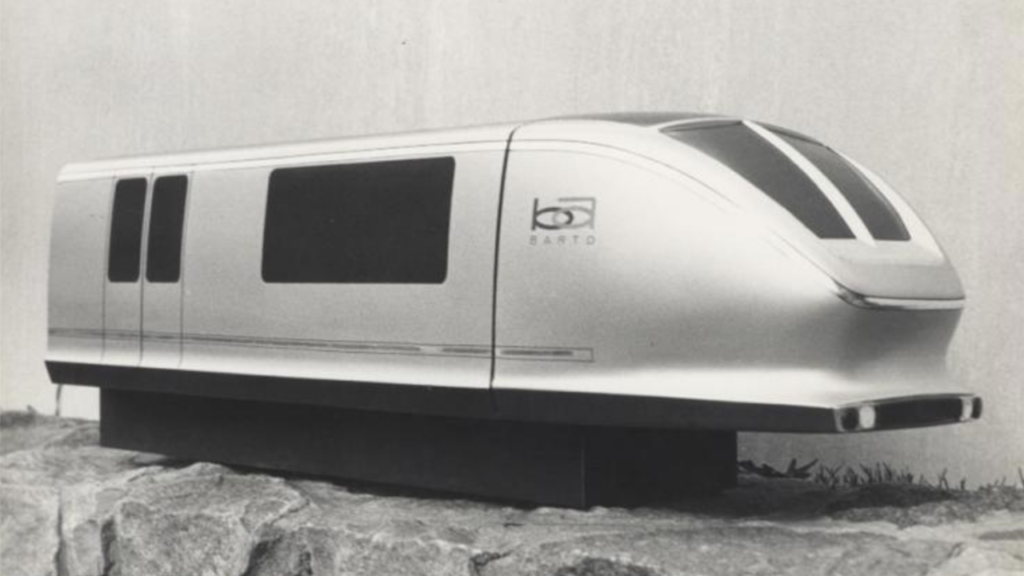
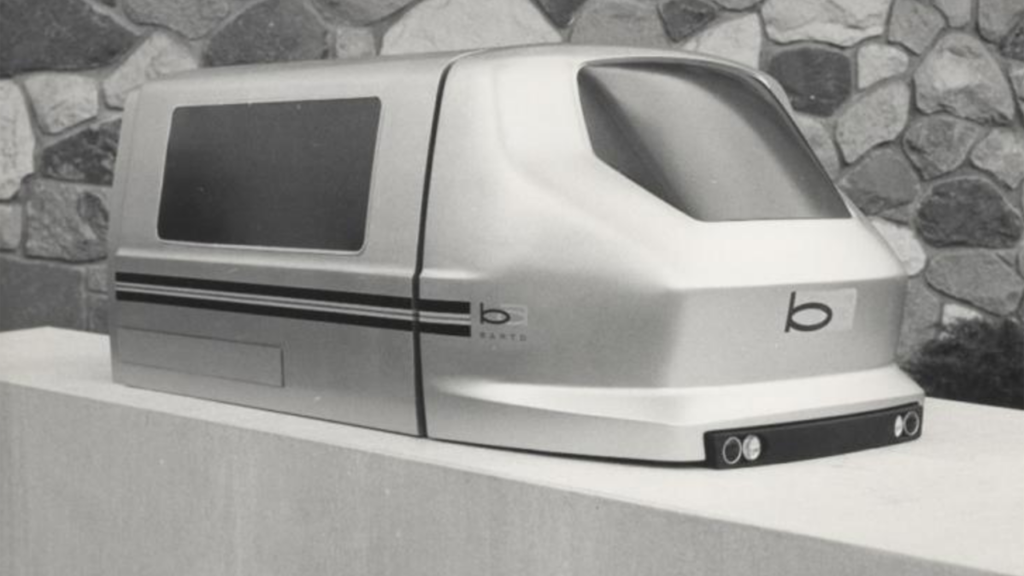
“Prototypes are a low-cost, low-risk way to test design ideas,” explained Lynnaea Haggard, Sundberg-Ferar’s Marketing Manager. “They’re the creation of artifacts for stakeholders to react to, which helps figure out what’s working and what’s not working.”
BART contracted Sundberg-Ferar to design cars for its budding mass rail system in the early ’60s. By 1964, the firm had hit the ground running, starting with basic concept sketches. From there, Sundberg-Ferar built a series of car prototypes at 1/12th scale. To put that in perspective, the initial prototypes were about 5 3/4 feet long—pint-size compared to the actual cars, which measured 70 feet.
It’s worth briefly turning our attention to the sketching phase. Many of the original BART car concepts were designed by acclaimed visionary designer Syd Mead, who’s largely responsible for creating the look and feel of science fiction classics such as “Star Trek,” “Blade Runner,” and “Tron.”
“I worked on the original design for the BART system train cars. Sundberg-Ferar designed the BART system cars,” Mead said in a 2015 interview before his death in 2019. “I did all of the presentation renderings for that.”
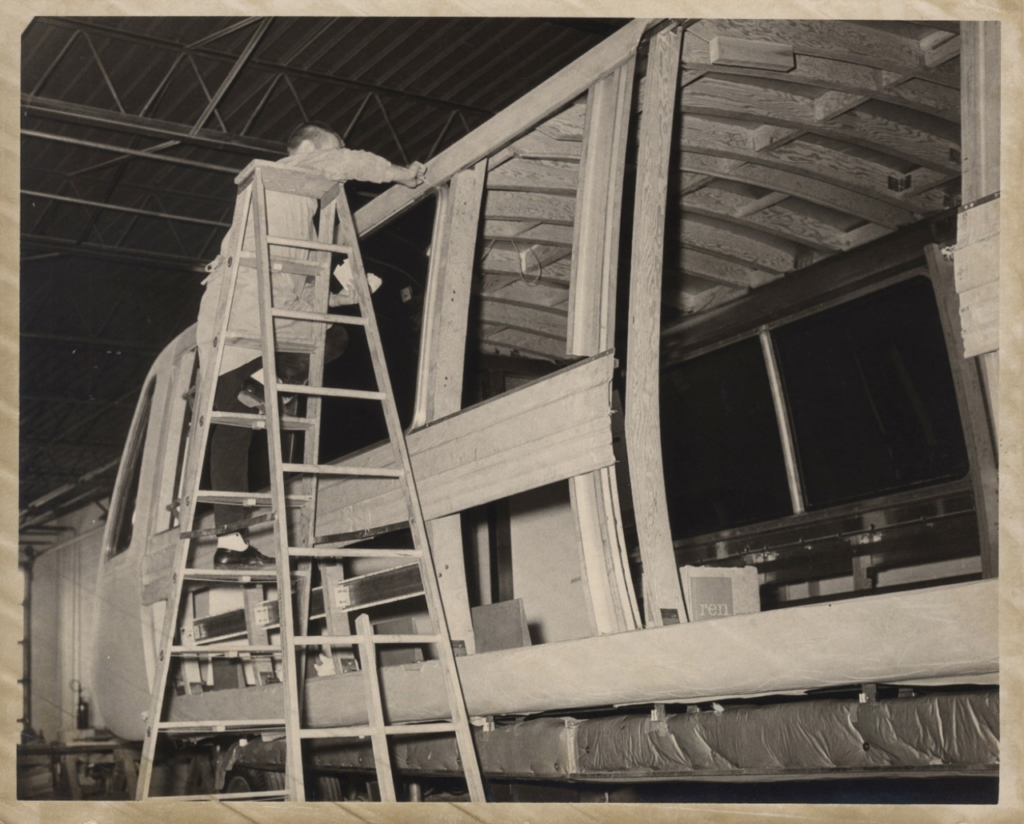
In the interview, Mead revealed that in initial discussions, the idea was to have a spare cab on each end of each line “so when the train would go across the Bay and then it would come back, you wouldn’t have to change the whole train around. You could take the control cabin off the back, install another one on the front and then, and away you go.”
That never came to be because “it’s such an elaborate thing,” Mead said.
After the sketch phase, Sundberg-Ferar began building a variety of small prototypes with wood, using a natural metal finish on the outside to further refine and evaluate the design direction. The firm then constructed quarter-scale models and eventually a full-scale prototype that was delivered to California (Sundberg-Ferar was based in Detroit) on the back of not one, but two, trailers. That model was unveiled officially at BART’s Hayward Test Track in June 1965—about seven years before the system opened for service.
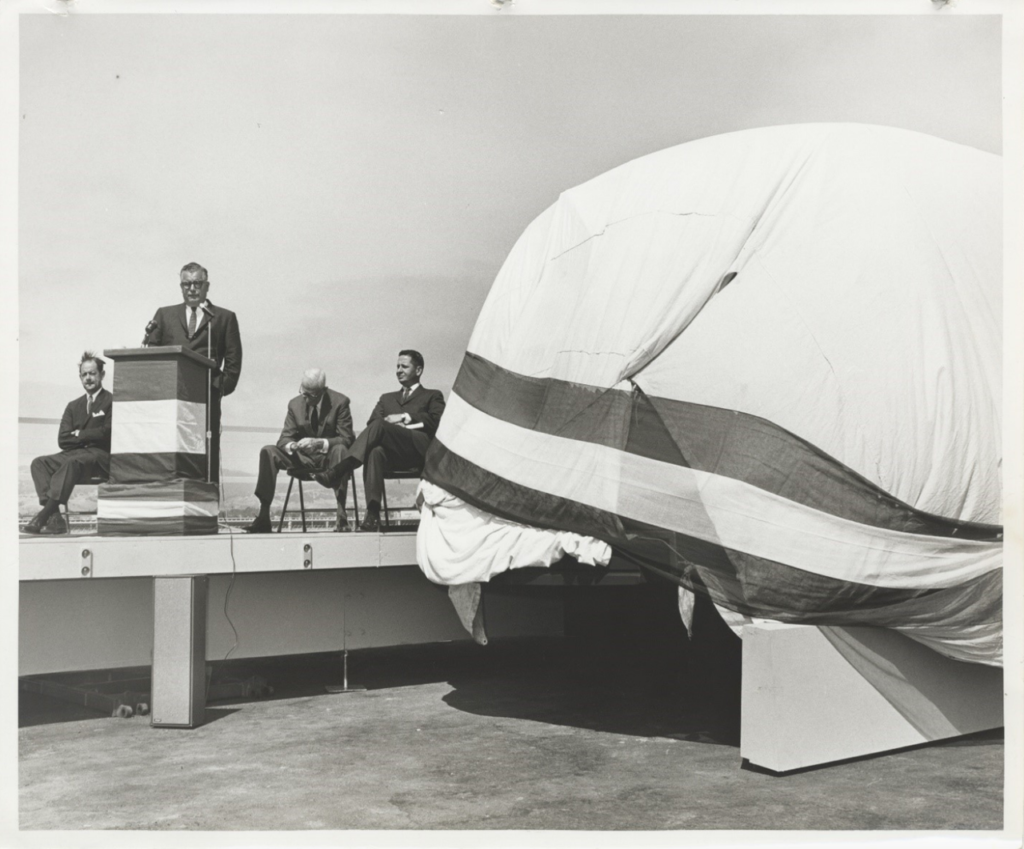
The full-scale model was shipped around the Bay Area, with BART allowing members of the public to walk through and try out the feel of it for themselves.
“The experience of the vehicle was mission critical to adoption,” Haggard said.
Per BART historian Michael Healy’s book, “BART: The Dramatic History of the Bay Area Rapid Transit System,” spot surveys suggested that “visitors to the models were, for the most part, very impressed with the cushioned seats, the carpeted floors, and the clean, wide body.” Some people, Healy writes, compared the experience to “being on an airplane, only with picture windows.”
“New standards of attractiveness, efficiency, and comfortableness was the banner flag,” Haggard said. She noted that BART’s design considerations for the project included ensuring that the railcars were comfortable, well-lit, temperature-controlled, and as quiet as possible on the tracks.
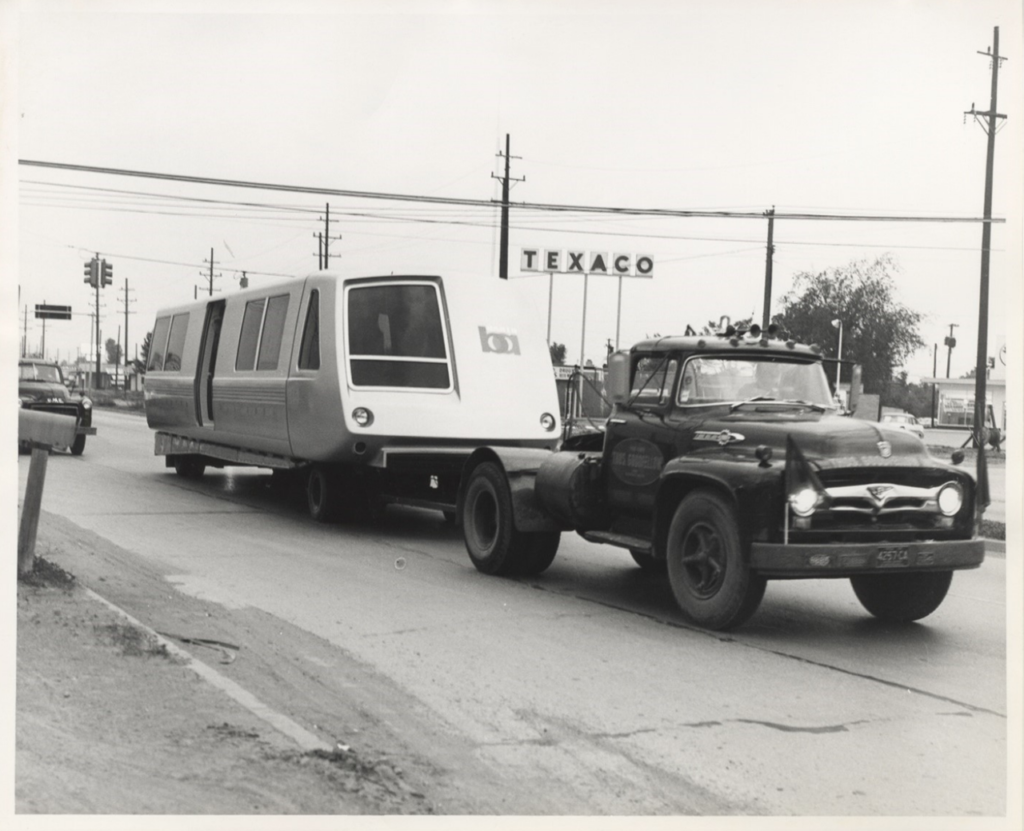
Carl Sundberg, one of the co-founders of Sundberg-Ferar, had a direct hand in the creation of the prototype. His goal: Design a railcar for the people.
“This was not to be some newfangled train,” Haggard said. “Even though BART was implementing all these new technologies, that didn’t mean the car was going to look like some sort of spaceship.”
In fact, Sundberg wanted the BART car to look like anything but a relic of space travel. He’s quoted as saying, “We are not going to the moon or across the country. It doesn’t have to look like a projectile.”
For that reason, Sundberg didn’t want the public to expect anything streamlined, hence the iconic sloping nose of the cab.
“It had to be an honest design,” Haggard said. “A rapid transit vehicle should look like a rapid transit vehicle.”
Haggard called the project “the opportunity of a lifetime” for Sundberg-Ferar designers, who had the chance to build a mass railcar from the ground up with plenty of creative leeway on BART’s end. At this time, in the mid-1960s, BART was the first mass urban rail transit system built in the U.S. since the early 20th century—the New York City Subway, for instance, opened in 1904.
Sundberg, above all else, wanted to design railcars with people in mind. Though human-centered design is now a well-accepted concept, it was novel at the turn of the century.
“It must be borne in mind that the object being worked on is going to be ridden in, sat upon, looked at, talked into, activated, operated, or in some way used by people individually or en masse,” wrote Henry Dreyfuss, an industrial designer, in November 1950. “If the point of contact between the product and people becomes a point of friction, then the designer has failed. If, on the other hand, people are made safer, more comfortable, more desirous of purchase, more efficient—or just plain happier—by contact with the product, then the designer has succeeded.”
With voices such as Dreyfuss’s painting a backdrop of design thought, Sundberg set out to apply the theory of human-centered design to the BART car.
“This is really the beginning of an era,” said Haggard. “BART is an amazing representation of what was a huge mindset shift in mass transit.”
This story first appeared on the BART website.



